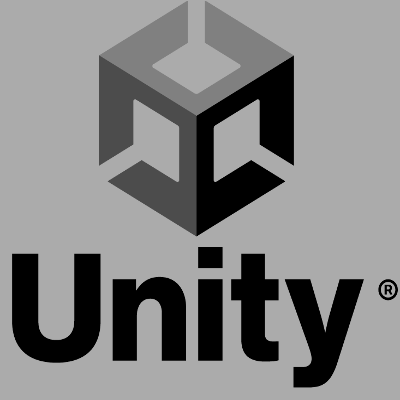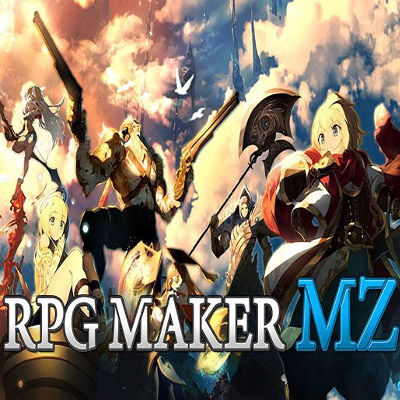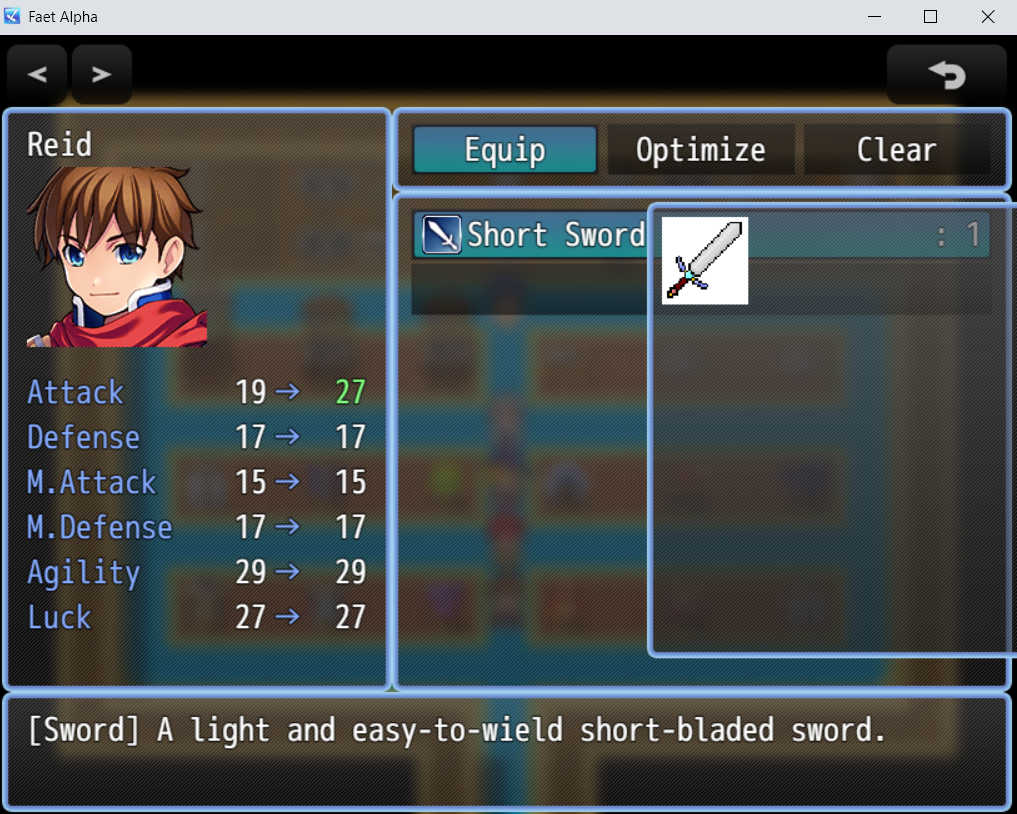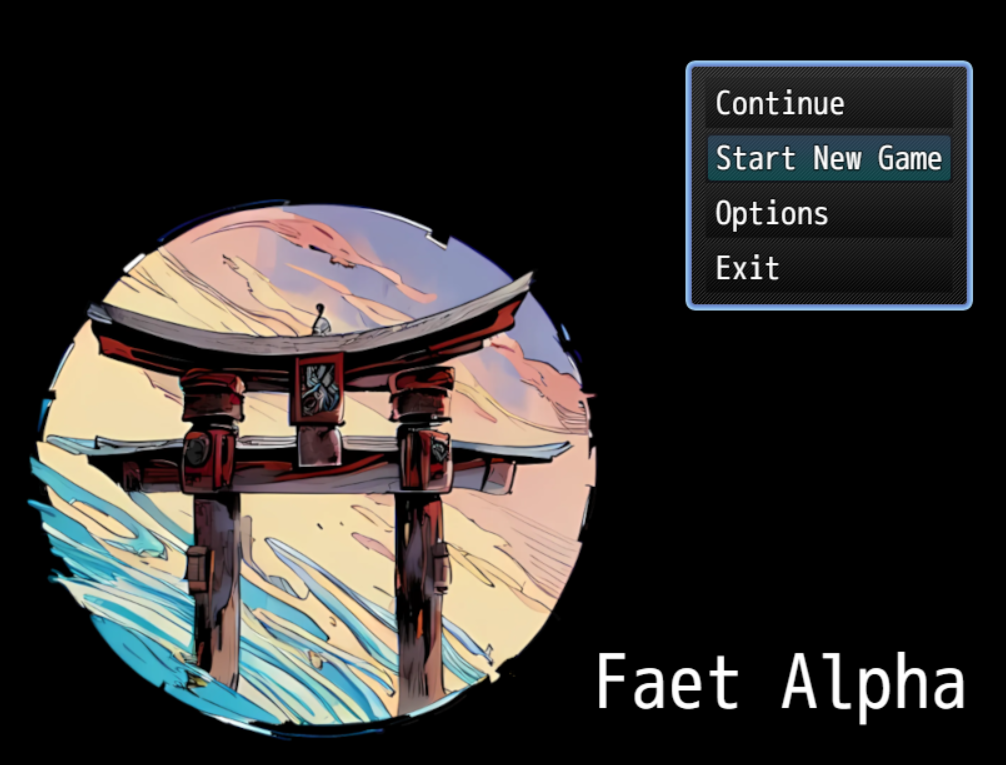
The Faet Blockchain is a decentralized Metaverse Engine used to build and secure the Faet universe and the digital assets within it. Faet will connect with popular game platforms to provide developers with tools to create their own game worlds. Players can take their non-fungible game assets, such as Characters and Items, and travel between the interconnected games and game worlds of the Faet Metaverse.
The Faet Metaverse is inspired by classic JRPGs like Final Fantasy 1 and Chrono Trigger. The first collections of the Faet Metaverse has a similar visual appearance to these classics games and the game mechanics will be optimized for turn based strategy.
Player can collect Faet NFTs that are unique to the Faet Metaverse and provide custom aesthetics like items and character skins as well as in-game bonuses to players.
Faet NFTs can be traded between players and are safely stored on the Faet blockchain as well as IPFS for additional security.
Faet will utilize plugins to connect to popular game engines like RPG Maker, Unity, and Unreal, as well as frameworks like Phaser. This will allow developers to create a variety of games using an integrated game engine to access digital assets on the Faet Blockchain. These games will govern the majority of their own in-game rules. Some specific rules governing the Faet metaverse will be hard coded on the blockchain to be voted on by the delegates. This includes the cost of minting new characters, items, or approval of a new official NFT collection.
Faet NFTs can be used in any game connected to the Faet Blockchain. Official NFT character collections will be known as Heroic Souls which have a unique trait which will be used for VIP access to locations in the metaverse as well as other additional perks.
New Gaming Trends

There are over 2 billion gamers, generating over $40 Billion in revenue for just PC/Game Console games. Of these, Free-To-Play games generate over 50% of this revenue and are estimated to generate $25 Billion in 2022.
The industry is moving towards free-to-play games where the majority of revenue is generated by Service-based monetization, also known as micro-transactions, which take place inside of the game application. With total gaming revenue expected to grow to over $200 Billion by 2023.
Players love free-to-play games, at the minimum allowing them to thoroughly play the game before spending any money on it at all. These same games offer numerous ways, and are often purposely structured, to encourage Players to make frequent transactions. And they do!
In-game microtransactions account for 88% of video game revenue. This is often for the purchase of premium content and in-game bonuses, but oftentimes for purely aesthetic reasons such as custom character graphics or sound bites.
The direction of the market seems clear, with players flocking towards free-to-play games, while simultaneously producing record amounts of revenue year over year.
The following is an article from Venturebeat.com with a market analysis from DMarket which gives a great perspective on the video gaming industry and where it’s headed:
Skins (cosmetic add-ons that customize the look of game characters) have become a staple of modern video games like Fortnite, and 85% of U.S. gamers ages 13 to 45 are aware of them. Newzoo’s report also said that 81% of those aware of in-game cosmetics want to trade skins for real-world money.
https://venturebeat.com/2020/12/18/newzoo-u-s-gamers-are-in-love-with-skins-and-in-game-cosmetics/
And 75% of players who are interested in skin trading say they would spend more on them if they had a monetary value outside of the game. Permitting players to sell skins outside of a game is a key monetization decision for game companies today.
Young male players are more likely to engage with cosmetics in games. And 43% of players claim they use skins to change the appearance of their avatars/characters, weapons, and vehicles.”
The Problem with Centralized gaming.
A major problem facing gamers is a lack of control over their assets. Billions of dollars worth of digital assets are locked away on centralized servers Most games lack the ability for Players to trade their assets and game-keys easily and they are forced to rely on secondary, often underground, markets.
A players valuable game assets and collections are trapped on centralized servers and often times Players are not allowed to move their Characters between multiple servers of the same game. If a Player gets tired of Playing a game, even after many years, all of their hard earned game assets and skins can be essentially worthless by being trapped by a single gaming platform. Even worse players can be censored and banned from expressing political views, saying something like “Free Taiwan,” or attempting to sell an account can result in a player being banned and their assets lost forever.
The parent company of Facebook, pivoted to embrace the metaverse by changing it’s name to Meta and launching an NFT marketplace. This shows that a even large industry leaders see the benefit of the metaverse and NFTs, but the issue is that many people, especially in the cryptospace, are very cautious of needing to trust centralized services specially ones like Meta who are notorious for censoring and banning users while still allowing armies of spam bots and scammers run free.
The Problem with current Web3 games.
Web3 games are seeking to solve the above issues and even more problems that face gamers and game developers. The first generation of Web3 games have been successful in laying the ground work for a new type of gaming that empowers the players and independent developers. However, several of the most popular Web3 games have foundational issues like prohibitive transaction fees or have suffered devastating attacks due to a lack of fundamentals like inefficient decentralization.
Most NFTs that have considerable value consist of actual digital art, usually in the form of a JPEG, typically content addressed to IPFS and stored on a blockchain for additional security. Minting your own collection of NFTs in this manner can cost thousands of dollars in network fees.
The cost of trading a cheap in-game NFT item can often cost a player more money then the item itself is worth. Although, many NFTs don’t even have these basic characteristics and are just strings of numbers or files only accessible on a centralized server. If the game developer was to pull the rug, the NFTs would no longer be usable in their own metaverse games.
Even the largest blockchain game, Axie Infinity, which seemed to have all of the correct incentives for players had a devastating attack. The network was controlled by only the development team, allowing hackers to easily attack the centralized network and take half a billion dollars in user funds from it’s Ethereum bridge.
With even the largest blockchain games suffer massive attacks on user funds and assets, player may be wondering where they can go next.
Faet is the Solution
The Faet blockchain is here to improve on the great strides it’s predecessors have made by showcasing the capabilities of Lisk and the creativity of Faet Team. Faet provides the ability to secure a players digital assets with a decentralized network and fair token distribution. The game is based on a Play-2-Earn model with low cost transaction fees for greater player accessibility.
After earning FAET tokens from playing games, players can choose to spend those tokens on things such as Minting or buying temporary in-game bonuses. Most importantly, Players can choose to participate in the governance of the chain by staking their FAET and voting for the delegates who secure the network. Delegates not only validate the transactions of the blockchain, but they are also important in determining the hard coded rules of the Faet Metaverse such as the cost of minting or the addition of new official NFT collections. Delegates will also participate in voting on allocating resources to fund proposals such as what game engines should be implemented next, the next official NFT collections, or developing more solutions and utility to the chain as it grows.
Players who rise to the top will even earn enough FAET to become delegates themselves, putting the fate of the entire blockchain into the hands of the Players.
NFTs with real Utility
Faet NFTs are similar to traditional NFTs in most ways, but they also include data which is usable in game. This includes timestamps, sprite sheets, scalable vector graphics, and other additional metadata associated with the asset to provide real utility. A players favorite character, including the graphics and attributes, can be safely stored in a Players Wallet. Then the Player can take their Character and other NFTs and leave one game and traverse the entire decentralized Faet metaverse by traveling to other games created by a decentralized network of game developers.
Players will be able to mint, trade, collect, and use their NFTs in game. Other ideas also being researched are the possibility of a crafting system where NFTs are burned to create new NFTs. As well as Soulbound tokens, a term recently coined by Vitalik Buterin himself, to describe non-transferable tokens which we would use for things such as Tournament Trophies, Game Achievements, or special Access Codes.
Interoperable
Faet is built using the Lisk SDK. This will allow Faet to be interoperable with other blockchains in the Lisk ecosystem as well as the ability to bridge to other Layer 1 blockchains.
Faet will also be interoperable between popular game engines by providing plugins and other tools. This will allow a large number of developers to access and build their own worlds connected to Faet. Digital Assets such as Player Characters and Items can be taken across interconnected game worlds which make up the Faet metaverse. The first game engine planned for integration is RPG Maker.



Faet Studios
The goal of Faet is for the Players to be the main holders of Faet Tokens, giving them the most power over the fate of the blockchain. To help make this dream a reality a dedicated team has been assembled.
The team have been involved with cryptocurrency since 2013 and first began as advocates of blockchain technology. With years of combined training and experience in software development, game design, marketing, navigating legal hurdles, business and community management the team is well positioned to launch a new decentralized blockchain using the Lisk SDK.

Lead Developer. Experience with JavaScript and Node JS. Digital Marketing Professional.
Full Stack developer at a technology company that services VIP clients such as the Super Bowl.

Project Lead and Game Developer. Cryptocurrency advocate since 2013. Active Lisk Delegate. Founder and Manager of Larpworks, Louisiana and the Gulf Coasts #1 Live action roleplaying production company.

Advisor. Licensed attorney in the USA.
Experience with navigating legal frameworks and assisting startups, foundations, and non-profits with a focus in blockchain technology.



